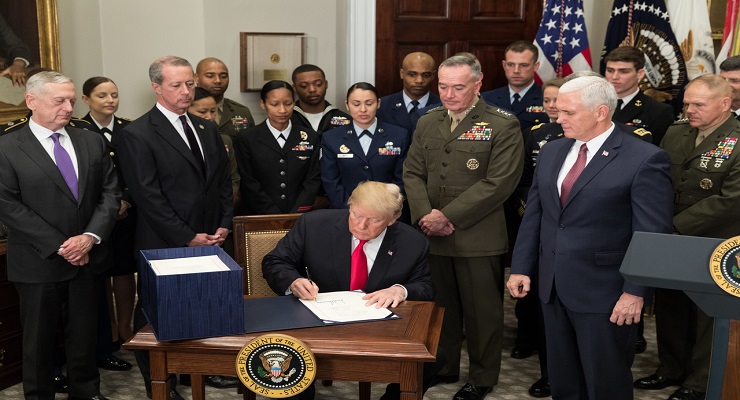
A new study has examined how the military views President Donald J. Trump’s leadership as Commander in Chief. According to the study by Mark Bowden, top-ranking military officers expressed unprecedented alarm about their Commander in Chief, with one officer saying that the hard part was that Trump could be President for another five years. Mark Bowden states that,
Military officers are sworn to serve whomever voters send to the White House. Cognizant of the special authority they hold, high-level officers epitomize respect for the chain of command, and are extremely reticent about criticizing their civilian overseers. That those I spoke with made an exception in Trump’s case is telling, and much of what they told me is deeply disturbing. In 20 years of writing about the military, I have never heard officers in high positions express such alarm about a president. Trump’s pronouncements and orders have already risked catastrophic and unnecessary wars in the Middle East and Asia, and have created severe problems for field commanders engaged in combat operations. Frequently caught unawares by Trump’s statements, senior military officers have scrambled, in their aftermath, to steer the country away from tragedy. How many times can they successfully do that before faltering?
Bowden highlights five characterizations of Trump’s military leadership: disdain for expertise; trust in own instincts; resistance to coherent strategy; reflexively contrary; a simplistic and antiquated notion of soldiering.
The Guardian reported that in an opinion article in the New York Times, McRaven accused Trump of spreading “frustration, humiliation, anger and fear” through the armed forces and of championing “despots and strongmen” while abandoning US allies. The four-star admiral called for Trump to either shape up or ship out of the White House.
“If this president doesn’t demonstrate the leadership that America needs, both domestically and abroad, then it is time for a new person in the Oval Office – Republican, Democrat or independent – the sooner, the better. The fate of our Republic depends upon it.”
The Guardian went on to state:
Trump should be coming under such sharp criticism from figures as revered as McRaven is all the more extraordinary given that Trump put those he called “my generals” at the center of his cabinet when he took office almost three years ago. He appointed Jim Mattis as defense secretary, Michael Flynn and HR McMaster as successive national security advisers, and John Kelly as homeland security secretary and then White House chief of staff.
Now all those generals are gone, and some are speaking out.
Mattis, who has largely kept his silence since resigning last December, made clear his disdain for the president in the form of a stream of jokes at a black-tie roasting on Thursday night. In his first public comments about his former boss, Mattis mocked the amount of time Trump spends on his golf courses and poked fun at how he had avoided military service in Vietnam by claiming bone spurs in his feet.
According to James Stavridis, Trump loves the military but doesn’t like using it. Stavridis’ perspective, however, would depict a President who has some smart strategies up his sleeves. Stavridis states for example that:
At the most basic level, the Trump strategic approach ensures a military that is well funded and combat-ready. Under him the Pentagon produced a reasonably effective National Defense Strategy. That strategy is notable for its pivot to emphasizing an emerging era of great-power competition after almost two decades of a counterterrorism strategy in the wake of 9/11. Both China and Russia are increasing their military capability, and Trump–despite his seeming personal affinity for Vladimir Putin–has been supportive of directing U.S. military readiness toward preparing for potential conflicts with them.
Another clear element of the Trump strategy is to push our allies to spend more on their defense, thus reducing the burden on the U.S. This strategy has produced an uptick in defense spending in Europe, although whether the NATO allies will in fact meet their pledge to hit the goal of 2% of GDP remains to be seen. Elsewhere, defense spending by allies and partners is rising in Asia (driven mainly by concerns about Chinese spending, particularly on the part of Japan and Australia) and the Middle East (where Iran’s bellicose behavior has had an effect, especially on the Israelis).
Leave a Reply